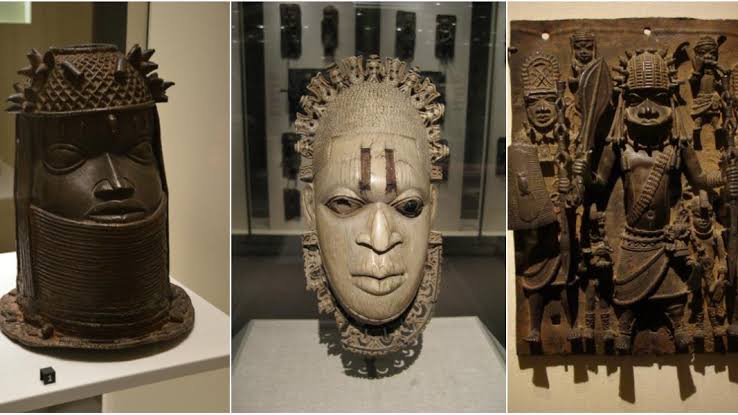By; DAKAM JOSEPH DAKUP The International council of museums (ICOM) 2020 defines a museum as a not-for-profit permanent Institution in the s
By; DAKAM JOSEPH DAKUP
The International council of museums (ICOM) 2020 defines a museum as a not-for-profit permanent Institution in the service of society that researches, collects, conserves, interprets and exhibits both tangible and intangible heritage, open to the public, accessible and inclusive.”
Museums all over the world are known to be custodians of the National and cultural heritages of a people.
These collections are in diverse forms and are used to either educate or entertain from Arts, scientific, historic, zoological and botanical specimen.
Collections is the assemblage of objects, objects are material evidence of man and his environment which are of value i.e historic, scientific etc.
Objects are generally classified into two, they are artifacts and Antiquities, while artifacts are the product of man i.e objects that showcase the idea of man which are historic, scientific, technological and socio-cultural values.
Antiquates are ancient relics or objects that are from a 100 years and above. This means that artifacts will tomorrow become antiquities if the museum is able to pressure and forestall deterioration.
There are other factors that necessitate identifying objects as artifacts. Though they may be of contemporary nature same are said to be artifacts if they have to be used in a special occasion such as the FESTAC, 1977, in this festival, the queen Idia face mask was used and this confirms the mask as artifacts.
Beside artifacts and antiquities, we also have zoological, botanical, zoological and several other types of natural heritage collections.
From the foregoing, it can be deduced that collection actually determines the existence and functions or activities of the museums, because these collections are valuable for the information they provide.
The museum used the information to educate and enlighten the general public and generations yet unborn.
There are basically two ways of arquiring collections, these are through the active and passive collection exercise while the active collection exercise involves the museum professionals going out to the field to arquire, while the passive collection exercise, they remain in the office and awaits the coming in the one collections.
The active collection exercise is also known as field collection exercise carried out by the Archaeologists, Ethnogphers, curetors and conservations.
The museum arquire collections through the following
Purchase – Museums have ve registered vendors from whom they usually buy collections.
These vendors are in every part of Nigeria with a strong Association. They are encouraged to sell to the museum as registered Association to discourage illicit trafficking of cultural materials within and outside the country.
Gifts-often members of the general public willingly bring forth objects as gift items to the museum, they are given receipt or letter of appreciation.
Donation – members of the public equally donate objects to the museum, the difference between gifts and donation is that while gifts do not have any condition, in donations comes with one condition or the other.
Return – This has to do with objects or collections that left and country illegally, through illicit trafficking.
When Nigeria for instance, stumbles on their objects in any part of the world, Nigeria can make a demand for the return, no too long ago over a hundred objects scattered in some…. Museums were repatriated back to Nigeria.
Exchange – Just as in track by barter, museums could also arquire their collections by exchanging one object for another.
Transfer – collections are also acquired through transfer when the museum having the object no longer have the capability to taking care of the object or when the object no longer fit into the mission statement of the museum.
Loans – this is made among museums that are working together under the same body, although there are instances where the collections are loaned out of the country.
Seizure – when cultural materials are found with individual at the Airport or border areas….export or clearance permit, they are ceased or confiscated by the police or custom officers or even museum professionals.
Bequest – some objects are bequeathed in “will” by a deceased person, such objects are brought into the museum by their relatives are automatically made property of the museum.
Though the museum have been given the mandate by law to collect objects as much as possible, but the museum is not expected to collect junks. There are certain conditions and criteria that guide the museum in collecting what it collects.
The object must be a legal property of the owner, hence, there must be proof of ownership (title deed)
It must be in-line with the museums mission statement.
It must be an authentic piece not fake.
The item must not pose as a threat to other collections.
It must not also pose a threat to the staff either. It must be free from any restriction or conditions by the donor.
It must be in compliance with the museum acquisition policy
The museum must be able to take care of the object in terms of conservation facilities and financial capabilities.
In conclusion, collection management in the museum setting is a very vital activity that will go a long way in preserving history.
Dakup is the Assistant Director
Education Department, National Museum Lafia




COMMENTS